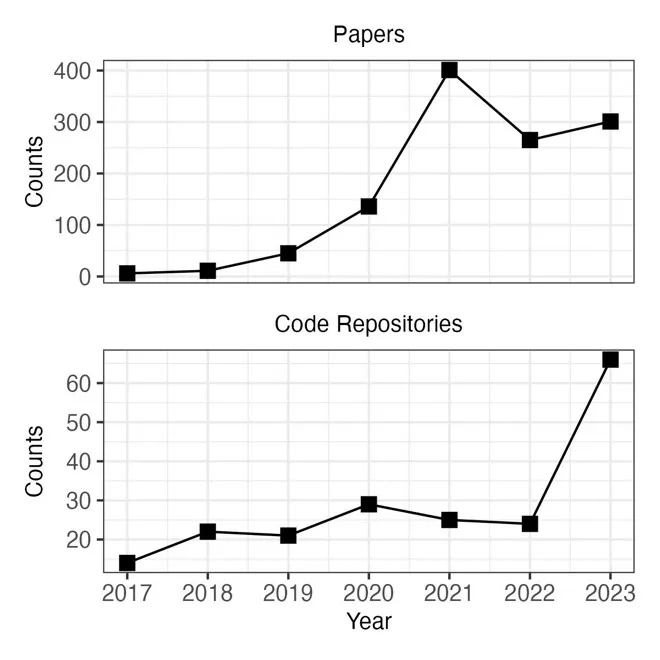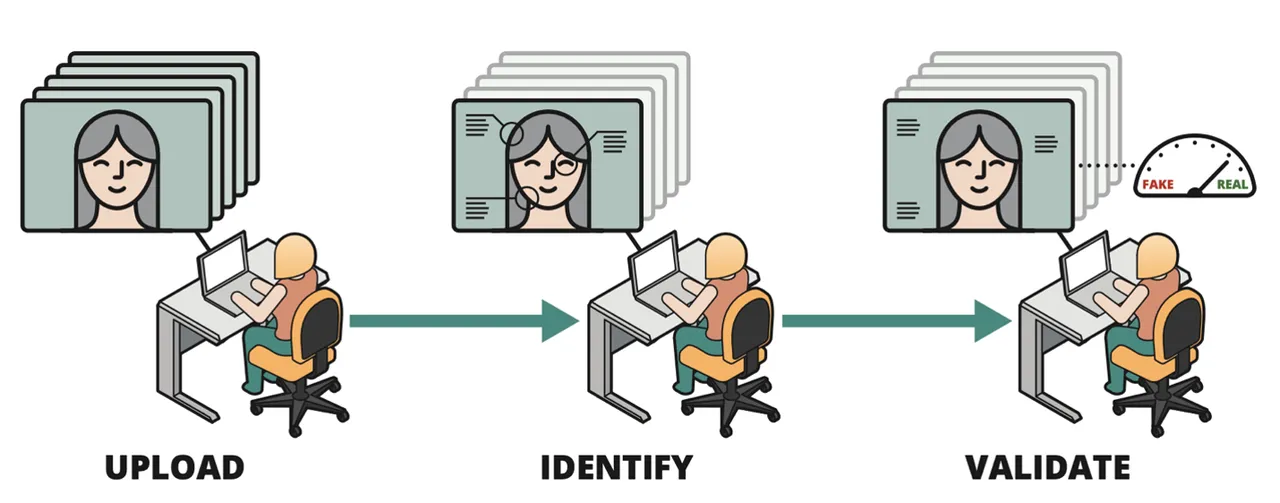This submit can also be written by Vedha Avali, Genavieve Chick, and Kevin Kurian.
Every single day, new examples of deepfakes are surfacing. Some are supposed to be entertaining or humorous, however many are supposed to deceive. Early deepfake assaults focused public figures. Nevertheless, companies, authorities organizations, and healthcare entities have additionally turn into prime targets. A current evaluation discovered that barely greater than half of companies in america and the UK have been targets of monetary scams powered by deepfake expertise, with 43 % falling sufferer to such assaults. On the nationwide safety entrance, deepfakes may be weaponized, enabling the dissemination of misinformation, disinformation, and malinformation (MDM).
It’s tough, however not not possible, to detect deepfakes with assistance from machine intelligence. Nevertheless, detection strategies should proceed to evolve as technology methods turn into more and more subtle. To counter the menace posed by deepfakes, our workforce of researchers within the SEI’s CERT Division has developed a software program framework for forgery detection. On this weblog submit we element the evolving deepfake panorama, together with the framework we developed to fight this menace.
The Evolution of Deepfakes
We outline deepfakes as follows:
Deepfakes use deep neural networks to create life like photographs or movies of individuals saying or doing issues they by no means stated or did in actual life. The method entails coaching a mannequin on a big dataset of photographs or movies of a goal particular person after which utilizing the mannequin to generate new content material that convincingly imitates the particular person’s voice or facial expressions.
Deepfakes are a part of a rising physique of generative AI capabilities that may be manipulated for deceit in info operations. Because the AI capabilities enhance, the strategies of manipulating info turn into ever more durable to detect. They embody the next:
- Audio manipulation digitally alters facets of an audio recording to change its that means. This could contain altering the pitch, period, quantity, or different properties of the audio sign. In recent times, deep neural networks have been used to create extremely life like audio samples of individuals saying issues they by no means really stated.
- Picture manipulation is the method of digitally altering facets of a picture to change its look and that means. This could contain altering the looks of objects or individuals in a picture. In recent times, deep neural networks have been used to generate fully new photographs that aren’t primarily based on real-world objects or scenes.
- Textual content technology entails the usage of deep neural networks, similar to recurrent neural networks and transformer-based fashions, to supply authentic-looking textual content that appears to have been written by a human. These methods can replicate the writing and talking fashion of people, making the generated textual content seem extra plausible.
A Rising Downside
Determine 1 beneath reveals the annual variety of reported or recognized deepfake incidents primarily based on information from the AIAAIC (AI, Algorithmic, and Automation Incidents and Controversies) and the AI Incident Database. From 2017, when deepfakes first emerged, to 2022, there was a gradual improve in incidents. Nevertheless, from 2022 to 2023, there was an almost five-fold improve. The projected variety of incidents for 2024 exceeds that of 2023, suggesting that the heightened degree of assaults seen in 2023 is prone to turn into the brand new norm moderately than an exception.

Most incidents concerned public misinformation (60 %), adopted by defamation (15 %), fraud (10 %), exploitation (8 %), and id theft (7 %). Political figures and organizations had been essentially the most ceaselessly focused (54 %), with further assaults occurring within the media sector (28 %), trade (9 %), and the non-public sector (8 %).
An Evolving Menace
Determine 2 beneath reveals the cumulative variety of tutorial publications on deepfake technology from the Internet of Science. From 2017 to 2019, there was a gradual improve in publications on deepfake technology. The publication price surged throughout 2019 and has remained on the elevated degree ever since. The determine additionally reveals the cumulative variety of open-source code repositories for deepfake technology from GitHub. The variety of repositories for creating deepfakes has elevated together with the variety of publications. Thus, deepfake technology strategies are extra succesful and extra accessible than ever earlier than prior to now.

Throughout this analysis, 4 foundational architectures for deepfake technology have emerged:
- Variational auto encoders (VAE). A VAE consists of an encoder and a decoder. The encoder learns to map inputs from the unique area (i.e., a picture) to a lower-dimensional latent illustration, whereas the decoder learns to reconstruct a simulacrum of the unique enter from this latent area. In deepfake technology, an enter from the attacker is processed by the encoder, and the decoder—educated with footage of the sufferer—reconstructs the supply sign to match the sufferer’s look and traits. Not like its precursor, the autoencoder (AE), which maps inputs to a set level within the latent area, the VAE maps inputs to a chance distribution. This enables the VAE to generate smoother, extra pure outputs with fewer discontinuities and artifacts.
- Generative adversarial networks (GANs). GANs encompass two neural networks, a generator and a discriminator, competing in a zero-sum recreation. The generator creates faux information, similar to photographs of faces, whereas the discriminator evaluates the authenticity of the information created by the generator. Each networks enhance over time, resulting in extremely life like generated content material. Following coaching, the generator is used to supply synthetic faces.
- Diffusion fashions (DM). Diffusion refers to a technique the place information, similar to photographs, are progressively corrupted by including noise. A mannequin is educated to sequentially denoise these blurred photographs. As soon as the denoising mannequin has been educated, it may be used for technology by ranging from a picture composed fully of noise, and steadily refining it via the discovered denoising course of. DMs can produce extremely detailed and photorealistic photographs. The denoising course of will also be conditioned on textual content inputs, permitting DMs to supply outputs primarily based on particular descriptions of objects or scenes.
- Transformers. The transformer structure makes use of a self-attention mechanism to make clear the that means of tokens primarily based on their context. For instance, the that means of phrases in a sentence. Transformers efficient for pure language processing (NLP) due to sequential dependencies current in language. Transformers are additionally utilized in text-to-speech (TTS) methods to seize sequential dependencies current in audio alerts, permitting for the creation of life like audio deepfakes. Moreover, transformers underlie multimodal methods like DALL-E, which may generate photographs from textual content descriptions.
These architectures have distinct strengths and limitations, which have implications for his or her use. VAEs and GANs stay essentially the most broadly used strategies, however DMs are rising in recognition. These fashions can generate photorealistic photographs and movies, and their potential to include info from textual content descriptions into the technology course of provides customers distinctive management over the outputs. Moreover, DMs can create life like faces, our bodies, and even complete scenes. The standard and inventive management allowed by DMs allow extra tailor-made and complicated deepfake assaults than beforehand attainable.
Legislating Deepfakes
To counter the menace posed by deepfakes and, extra essentially, to outline the boundaries for his or her authorized use, federal and state governments have pursued laws to control deepfakes. Since 2019, 27 deepfake-related items of federal laws have been launched. About half of those contain how deepfakes could also be used, specializing in the areas of grownup content material, politics, mental property, and client safety. The remaining payments name for reviews and process forces to review the analysis, growth, and use of deepfakes. Sadly, makes an attempt at federal laws aren’t protecting tempo with advances in deepfake technology strategies and the expansion of deepfake assaults. Of the 27 payments which were launched, solely 5 have been enacted into legislation.
On the state degree, 286 payments had been launched throughout the 2024 legislative session. These payments predominantly concentrate on regulating deepfakes within the areas of grownup content material, politics, and fraud, and so they sought to strengthen deepfake analysis and public literacy.
These legislative actions symbolize progress in establishing boundaries for the suitable use of deepfake applied sciences and penalties for his or her misuse. Nevertheless, for these legal guidelines to be efficient, authorities have to be able to detecting deepfake content material—and this functionality will rely upon entry to efficient instruments.
A New Framework for Detecting Deepfakes
The nationwide safety dangers related to the rise in deepfake technology methods and use have been acknowledged by each the federal authorities and the Division of Protection. Attackers can use these methods to unfold MDM with the intent of influencing U.S. political processes or undermining U.S. pursuits. To deal with this challenge, the U.S. authorities has carried out laws to boost consciousness and comprehension of those threats. Our workforce of researchers within the SEI’s CERT Division have developed a instrument for establishing the authenticity of multimedia belongings, together with photographs, video, and audio. Our instrument is constructed on three guiding rules:
- Automation to allow deployment at scale for tens of 1000’s of movies
- Blended-initiative to harness human and machine intelligence
- Ensemble methods to permit for a multi-tiered detection technique
The determine beneath illustrates how these rules are built-in right into a human-centered workflow for digital media authentication. The analyst can add a number of movies that includes a person. Our instrument compares the particular person in every video towards a database of identified people. If a match is discovered, the instrument annotates the person’s id. The analyst can then select from a number of deepfake detectors, that are educated to determine spatial, temporal, multimodal, and physiological abnormalities. If any detectors discover abnormalities, the instrument flags the content material for additional evaluate.

The instrument allows fast triage of picture and video information. Given the huge quantity of footage uploaded to multimedia websites and social media platforms day by day, that is a vital functionality. By utilizing the instrument, organizations could make one of the best use of their human capital by directing analyst consideration to essentially the most important multimedia belongings.
Work with Us to Mitigate Your Group’s Deepfake Menace
Over the previous decade, there have been exceptional advances in generative AI, together with the flexibility to create and manipulate photographs and movies of human faces. Whereas there are respectable purposes for these deepfake applied sciences, they will also be weaponized to deceive people, corporations, and the general public.
Technical options like deepfake detectors are wanted to guard people and organizations towards the deepfake menace. However technical options aren’t sufficient. It’s also essential to extend individuals’s consciousness of the deepfake menace by offering trade, client, legislation enforcement, and public training.
As you develop a method to guard your group and other people from deepfakes, we’re able to share our instruments, experiences, and classes discovered.